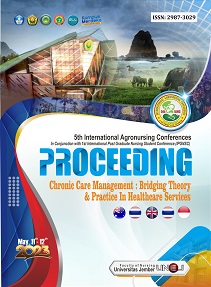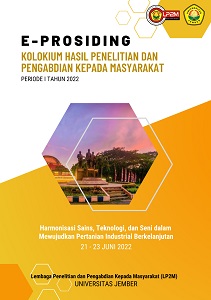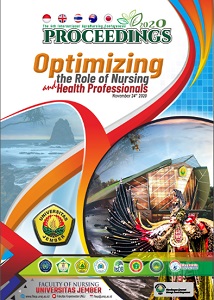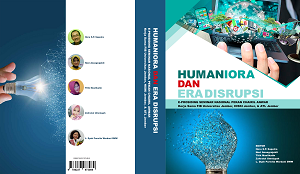IN VITRO ALFA-GLUCOSIDASE INHIBITORY ACTIVITY OF VARIOUS TEA (Camellia sinensis L.) EXTRACTS
Abstract
Diabetes mellitus is a group of metabolicdiseases characterized by hyperglycemia [1]. DM is
classified based on the pathogenic process that leads
to hyperglycemia as opposed to earlier criteria such
as age of onset or type of therapy. There are two
broad categories of DM, designated type 1 and type
2 [2]. There were 10 million cases of diabetes in
Indonesia in 2015. The number of these cases is
predicted to continue rising [3].
Therapeutic approaches for the treatment of
type 2 diabetes, such as diet, sulphonylurea,
metformin and insulin therapy, are all successful in
decreasing fasting glucose levels. The importance of
postprandial hyperglycaemia has led to the
development of new agents to control this important
aspect of diabetes.Thus, α-glucosidase enzyme has
become one of important target in the treatment of
type-2 diabetes [4,5].
α-glucosidase inhibition will slow the
digestion of carbohydrate and absorbtion of
monosaccahrides in the proximal jejenum [6].
Acarbose is an oligosaccharide which reversibly
inhibits intestinal α-glucosidase enzymes responsible
for digestion of complex carbohydrates and
disaccharides to absorbable monosaccharides [7].
The most common adverse effect of acarbose is
abdominal discomfort associated with flatulence and
diarrhoea [8]. The undesirable side effects that exist
underlie the emergence of research for alternative
therapy of type 2 diabetes, particularly through the
mechanism of inhibition enzyme α-glucosidase.
Tea (Camellia sinensis L.) is annual plant that
widely spread in Southest Asia, India, South China,
Northwest Laos, Thailand and Burma. Tea is one of
the most popular beverages consumed worldwide
[9]. Various studies have reported beneficial effect
of tea extract, including for diabetes mellitus
therapy. Previous studies showed that tea extract
have antidiabetic activity in mice induced by
streptozotocin [10]. Antidiabetic activity of tea
extract have been reported by Yang and Koh. The
results showed that black tea extract had higher
activity to inhibit α-glucosidase than green tea
extract. The present study was designed to compare
in vitro α-glucosidase inhibitory activity of various
tea extracts, such as black tea, green tea, oolong tea,
and white tea.
Published
2017-01-27
How to Cite
CHRISTIANTY, Fransiska Maria; HOLIDAH, Diana; YASMIN, Yasmin.
IN VITRO ALFA-GLUCOSIDASE INHIBITORY ACTIVITY OF VARIOUS TEA (Camellia sinensis L.) EXTRACTS.
UNEJ e-Proceeding, [S.l.], p. 104-107, jan. 2017.
Available at: <https://jurnal.unej.ac.id/index.php/prosiding/article/view/3905>. Date accessed: 22 dec. 2024.
Section
General









